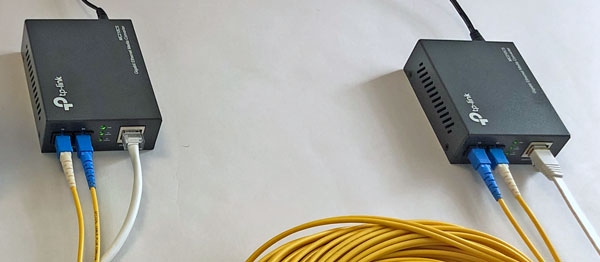In today’s fast-paced, always connected world, fiber optics have become a must for businesses who want to stay one step ahead of their competition. The use of fiber to Ethernet converters is one way that businesses can take advantage of the increased bandwidth and speed offered by fiber optics. But what exactly is a fiber to Ethernet converter and how does it work? In this blog post, we will explore this technology in detail so you can understand why it is such an important part of the modern business landscape.
What is a fiber to Ethernet converter?
A fiber to Ethernet converter is a device that helps connect an Ethernet network to a fiber optic network. It does this by converting the electrical signals that make up an Ethernet network into optical signals that can travel across a fiber optic cable.
This can be useful in situations where you want to connect two different types of networks, or where you need to extend the reach of an existing Ethernet network. Fiber to Ethernet converters can also be used to connect an Ethernet network to other types of networks, such as token ring or ATM.
Fiber to Ethernet converters typically come in two main types: standalone units and blade units. Standalone units are designed to be used with a single computer, while blade units are designed for use with multiple computers. Both types of converters usually have one or more ports for connecting to an Ethernet network and one or more ports for connecting to a fiber optic cable.
How does a fiber to Ethernet converter work?
A Fiber to Ethernet converter is a device that allows you to connect an Ethernet cable to a device that uses a fiber optic connection. In order for the converter to work, it needs to be connected to both an Ethernet port and a fiber optic port. The converter will then take the signal from the Ethernet cable and convert it into a signal that can be sent over the fiber optic connection.
What are the benefits of using a fiber to Ethernet converter?
Fiber to Ethernet converters offer a number of advantages over traditional Ethernet cables. For one, they provide much higher data transfer speeds than copper Ethernet cables. Additionally, they are much more resistant to interference and crosstalk, making them ideal for use in high-speed networking applications. Finally, fiber to Ethernet converters can be used to connect two devices that are not physically close to each other, which is not possible with copper Ethernet cables.
How to choose the right fiber to Ethernet converter for your needs
If you’re looking to connect your Ethernet devices to a fiber optic network, you’ll need a fiber to Ethernet converter. But with so many different types and models on the market, how do you choose the right one for your needs?
Here are a few things to keep in mind when shopping for a fiber to Ethernet converter:
- What type of connection do you need? There are two main types of fiber to Ethernet converters: media converters and transceivers. Media converters simply convert the signal from one format to another, while transceivers also amplify the signal. If you’re connecting over long distances, or if there’s a lot of interference on your line, you’ll need a transceiver.
- What speed do you need? Fiber optic networks can operate at speeds much faster than traditional Ethernet networks. If you want to take advantage of that extra speed, make sure your converter is rated for the same speed as your network.
- What distance do you need to cover? Fiber optics can transmit signals over much longer distances than copper cables. Keep this in mind when choosing a converter, as some models are only designed for short-range applications.
- What features do you need? Some converters come with extra features like built-in diagnostics or optical isolation. These can be useful in certain applications, but they’ll also add to the cost of the device. Make sure you only pay for features that you
Conclusion
Taking advantage of a fiber to Ethernet converter can be a great way for businesses, as well as individuals, to upgrade their network connections. With the ability to quickly and easily convert from one type of connection to another, this is an essential tool for anyone looking to improve their networking capabilities. We hope that this article has helped you gain a better understanding of what a fiber to Ethernet converter is and how it works so that you are able to make informed decisions about your network options in the future.

